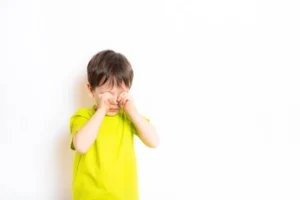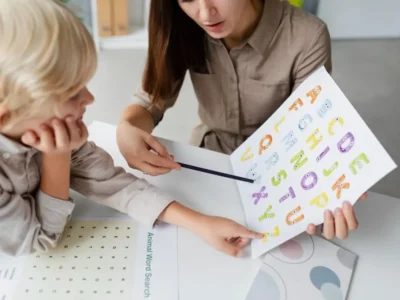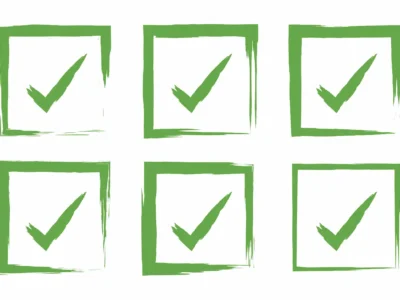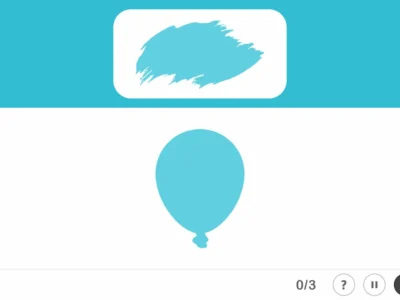Have you heard of the Tourette syndrome? In Spain it is still considered a rare disease according to its prevalence in the population, however international studies indicate that it is actually a condition much more common than previously thought. This article is dedicated to demystifying this and other misconceptions that still circulate about it. Let us deconstruct then the Tourette syndrome.
What is Tourette syndrome?
According to international diagnostic criteria Tourette syndrome is a primary movement disorder, whose main characteristic is the chronic presence of tics[3,4], although it is often associated with other disorders such as OCD or ADHD [1].
What defines a tic?
Although, as has been pointed out, the word tic derives from the Italian ticchio [5] which means caprice as a synonym of desire, whim, extravagance [6, 7], far from being a caprice or desire of the person who manifests them, tics are movements or vocalizations that are performed involuntarily. Although they may appear extravagant for being exaggerated in intensity, frequency, or repetition, and decontextualized or unrelated to situations, since they are behaviors that are not directed toward a goal, as voluntary movements [8] or the voluntary utterance of words or sounds are.

Subscribe
to our
Newsletter
Deconstructing Tourette
- More than a syndrome, it is a spectrum disorder. Several different syndromes or subtypes of Tourette have been described [1,9], which is why it is currently considered more appropriate to speak of Tourette spectrum disorder than of Tourette syndrome [10].
- Saying obscenities is not common in Tourette. Coprolalia (uttering obscene words involuntarily and without intention to offend [1,10]) is one of the most publicized symptoms of Tourette, partly due to its dissemination through film and the media. Although it may certainly be one of its most striking manifestations, it is a feature present in less than one fifth of those affected [11].
- Particular creativity for music. Although there does not seem to be a linear relationship between the excess dopamine underlying Tourette and creativity, studies on the subject highlight an association between Tourette disorder and musical creativity [12].
- Its origin is not psychological. Although it was originally thought that the cause of Tourette was psychological, this theory became obsolete [1] since the evidence points to an etiology that includes influences both genetic and environmental [1].
Bibliography
- Robertson, M. M. (2012). The Gilles De LaTourette syndrome: the current status. Archives Of Disease In Childhood – Education And Practice, 97(5), 166-175. http://dx.doi.org/10.1136/archdischild-2011-300585
- Robertson, M. M., Eapen, V., &Cavanna, A. E. (2009). The international prevalence, epidemiology, and clinical phenomenology of Tourette syndrome: A cross-cultural perspective. Journal Of Psychosomatic Research, 67(6), 475-483. http://dx.doi.org/10.1016/j.jpsychores.2009.07.010
- American Psychiatric Association (2013). Diagnostic and Statistical Manual of Mental Disorders: DSM-5 (5th ed.) Washington D.C.: Author.
- Organización Mundial de la Salud (1992) Clasificación Internacional de Enfermedades y Problemas Relacionados con la Salud: ICD-10 (10th revision). Geneva: Author.
- Varsemanas, D. R. (September 2002). The incidence of stress and the objectives of psychological therapy in the biopsychosocial and behavioral aspects of Gilles de la Tourette syndrome. An interactive model for the integration of factors. In S. Jurado (Presidency). First National Congress of Tourette Syndrome and Associated Disorders. ASTTA, Córdoba, Spain.
- Academia dellaCrusca(May 27, 2017).Retrieved from http://www.accademiadellacrusca.it/it/link-utili/dizionari-sincronici
- DizionariCorrieri (May 27, 2017)Retrieved from http://dizionari.corriere.it/dizionario_sinonimi_contrari/T/ticchio.shtml
- Jankovic, J., &Fahn, S. (1986). The phenomenology of tics. Movement Disorders, 1(1), 17-26. http://dx.doi.org/10.1002/mds.870010103
- Robertson, M. (2000). Tourette syndrome, associated conditions and the complexities of treatment. Brain, 123(3), 425-462. http://dx.doi.org/10.1093/brain/123.3.425
- Robertson MM &Eapen V (2013).Wither the relationship between aetiology and phenotype in Tourette In: Leckman JF, Martino, D (Eds.), Tourette Syndrome. Oxford University Press, New York, pp. 361–394.
- Freeman, R.D., Zinner, S.H., Muller-Vahl, K.R., Fast, D.K., Burd, L.J., Kano, Y., Rothenberger, A., Roessner, V., Kerbeshian, J., Stern, J.S., Jankovic, J., Loughin, T., Janik, P., Shady, G., Robertson, M.M., Lang, A.E., Budman, C., Magor, A., Bruun, R., and Berlin, C.M. Jr. (2009) Coprophenomena in Tourettesyndrome. Med. ChildNeurol,51: 218–227.DOI:10.1111/j.1469-8749.2008.03135.x
- Espert, R., Gadea, M., Aliño, M. y Oltra-Cucarella, J. (2017). Neuropsychology of Tourette disorder: cognition, neuroimaging and creativity. Revista de Neurología, 64 (s01): S65-S72. http://www.neurologia.com/articulo/2017015
- Jeremy Willsey, Thomas V. Fernandez, DongmeiYu, Robert A. King, Andrea Dietrich, JinchuanXing, Stephan J. Sanders, Jeffrey D. Mandell, Alden Y. Huang, Petra Richer, Louw Smith, Shan Dong, Kaitlin E. Samocha, (2017). De novocodingvariants are stronglyassociatedwithTouretteDisorder.Neuron, 94 (3), 486 – 499. DOI: http://dx.doi.org/10.1016/j.neuron.2017.04.024
- Ganos, C., Roessner, V., &Münchau, A. (2013). The functional anatomy of Gilles de la Tourette Neuroscience &Biobehavioral Reviews, 37(6), 1050-1062.
- Comisión Europea (May 27, 2017). Rare diseases: a challenge for Europe. Retrieved from: http://ec.europa.eu/health/ph_threats/non_com/docs/raredis_comm_es.pdf
- Ministerio de Economía, Industria y Competitividad e Instituto de Salud Carlos III. (May 27, 2017). National Registry of Rare Diseases.Retrieved from: https://registroraras.isciii.es/Comun/Inicio0.aspx
- Instituto Nacional de Estadística. (May 27, 2017). Retrieved from: http://www.ine.es/dyngs/INEbase/es/operacion.htm?c=Estadistica_C&cid=1254736176951&menu=ultiDatos&idp=1254735572981
If you liked this post about Tourette syndrome, you may be interested in the following NeuronUP articles:
“This article has been translated. Link to the original article in Spanish:”
Deconstruyendo el síndrome de Tourette







 Neuropsychological Rehabilitation in Parkinson’s Disease
Neuropsychological Rehabilitation in Parkinson’s Disease
I have a grand-niece who has “spectrum of Tourette disorder”. She is thirteen years old. The teachers etc are treating her has if she is a bad person. The children make fun of her and no one seems to enlighten them or teach them how to be kind. This only makes the disorder much worse: she cries, feels alone, isolated and many times those feelings not only are real as feeling they are what is actually happening to her. The school wishes to blame my niece. She and her mother need a few coping skills since the school wishes to wash their hands of her – send her to a psychiatrist. In other words, label her as mentally ill. This is ignorance at its worst.